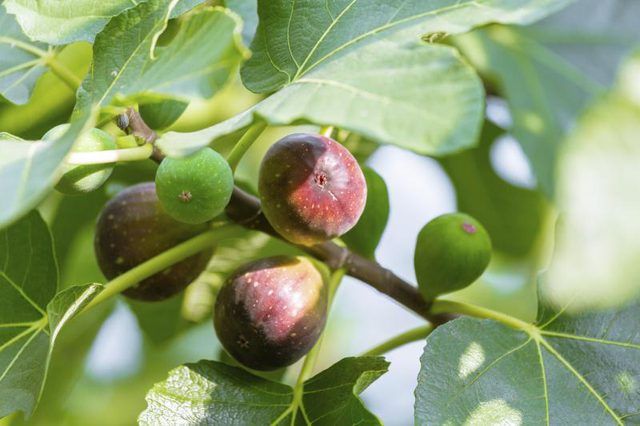Bulbs
Flower Basics
Flower Beds & Specialty Gardens
Flower Garden
Garden Furniture
Garden Gnomes
Garden Seeds
Garden Sheds
Garden Statues
Garden Tools & Supplies
Gardening Basics
Green & Organic
Groundcovers & Vines
Growing Annuals
Growing Basil
Growing Beans
Growing Berries
Growing Blueberries
Growing Cactus
Growing Corn
Growing Cotton
Growing Edibles
Growing Flowers
Growing Garlic
Growing Grapes
Growing Grass
Growing Herbs
Growing Jasmine
Growing Mint
Growing Mushrooms
Orchids
Growing Peanuts
Growing Perennials
Growing Plants
Growing Rosemary
Growing Roses
Growing Strawberries
Growing Sunflowers
Growing Thyme
Growing Tomatoes
Growing Tulips
Growing Vegetables
Herb Basics
Herb Garden
Indoor Growing
Landscaping Basics
Landscaping Patios
Landscaping Plants
Landscaping Shrubs
Landscaping Trees
Landscaping Walks & Pathways
Lawn Basics
Lawn Maintenance
Lawn Mowers
Lawn Ornaments
Lawn Planting
Lawn Tools
Outdoor Growing
Overall Landscape Planning
Pests, Weeds & Problems
Plant Basics
Rock Garden
Rose Garden
Shrubs
Soil
Specialty Gardens
Trees
Vegetable Garden
Yard Maintenance
How to Care for a Fig Tree
How to Care for a Fig Tree. Store-bought figs can't compare to succulent, homegrown fruit plucked from a common fig tree (Ficus carica). Young, newly planted trees appreciate some TLC while they get going, but mature figs need little ongoing care in their prime growing zones. Easy-care and low-maintenance, the trees best suit U.S. Department of...

Store-bought figs can't compare to succulent, homegrown fruit plucked from a common fig tree (Ficus carica). Young, newly planted trees appreciate some TLC while they get going, but mature figs need little ongoing care in their prime growing zones. Easy-care and low-maintenance, the trees best suit U.S. Department of Agriculture plant hardiness zones 8 through 10. Not to be denied, determined cool-climate fig fans regularly overwinter trees in USDA zones 6 and 7, with protected planting sites and extra insulation.
Water Requirements
Fig health and productivity relies on proper watering. Fig trees develop far-reaching but shallow root systems that easily dry out, and young trees need consistent moisture to establish roots. Provide young figs with 1 inch of water per week, including rainfall, and watch their leaves closely. Midday wilting means they need more water. Water fig trees deeply, and let the soil dry slightly before watering again. In dry climates, water mature trees every seven to 14 days. Drought-stressed fig leaves turn yellow and drop -- fruit follows suit. Gradually cut back watering in autumn to encourage dormancy. Fully dormant fig trees withstand temperatures of 15 degrees Fahrenheit or lower, but even slight drops below freezing injure actively growing trees.
Fertilizer Needs
Figs prefer well-drained soil, rich in organic matter. Slightly acid soil pH near 6.0 to 6.5 is ideal for fig nutrition, but trees tolerate pH from 5.5 to 8.0. Mature figs rarely need fertilization unless grown in pots or very sandy soil. Excessive nitrogen inhibits plump, moist fruits. Only fertilize figs when branches grow poorly -- less than 12 inches annually. If needed, provide 1/2 to 1 pound of actual nitrogen per season, divided into three feedings from late winter to midsummer. As a guide, 5 pounds of 10-10-10 fertilizer provides 1/2 pound of actual nitrogen. Broadcast fertilizer throughout the root area and water well. Wear protective clothing, including gloves and safety eyewear, when applying fertilizer.
Pruning and Protection
Most formative pruning takes place during a fig tree's first three years. Shape trees during winter dormancy and remove crossing branches that interfere with healthy growth. Prune older trees only when necessary to remove dead or damaged wood. Regular pruning limits fruit and exposes heat- and sun-sensitive trunks and branches. If necessary, prune immediately after the main fall harvest -- figs bear their major crop on the previous year's wood. Use sharp bypass loppers or a curved pruning saw, and sterilize the blades with household disinfectant before and after you prune. Whitewash newly exposed trunks and branches after any major pruning. Use a solution of equal parts water and interior white latex paint.
Pests and Prevention
Several region-specific diseases and insect pests can trouble fig trees, but most have no effective, recommended treatment. Proper culture, sanitation and prevention are the best defenses against problems such as root-knot nematodes, fig rust and fig mosaic virus. Choose resistant cultivars and disease- and pest-free plants. Keep the area around fig trees free of fallen fruits from figs or other trees. Remove mummy or frost-damaged fruits immediately, before pests find them. If leaf diseases strike, rake and destroy the fallen leaves. Protect against sunburn and cankers by whitewashing newly pruned trees.
Special Winter Care
Inside or outside their prime growing zones, figs benefit from sunny, protected, south-facing locations. The extra warmth and reflected heat enhance fruits and winter hardiness, especially in areas with short growing seasons and cool summers. In regions near or beyond fig hardiness limits, provide extra winter protection. One method is to encircle the tree in a cylinder of chicken wire filled with straw or packed oak leaves. Keep the root area as dry as possible through winter, and mound soil around the tree's base for extra protection, if desired. Keep the insulation in place until threats of hard spring frosts pass, then uncover the tree as new growth begins.